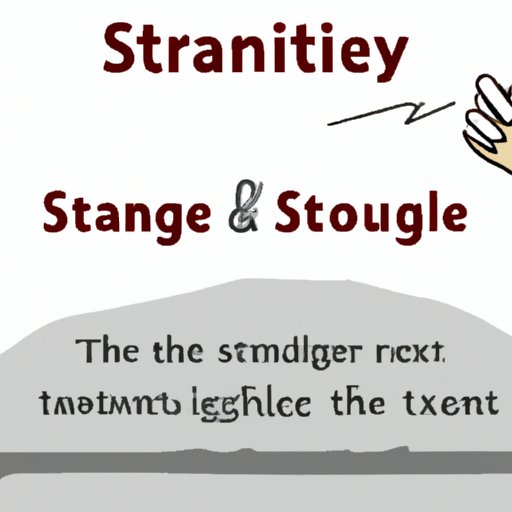Introduction
Narrative writing is a form of creative writing that allows writers to tell stories through the use of characters, plot, setting, sensory language, and other literary devices. In this article, we will explore the basics of narrative writing and how to craft engaging stories. We will also look at common mistakes writers make when writing narratives and analyze narrative writing in literature.
A Beginner’s Guide to Narrative Writing
To understand narrative writing, it’s important to first define what it is. Narrative writing is a type of creative writing that tells a story or narrates an event. It can be written in the first person, third person, or even second person point of view. The main purpose of narrative writing is to engage readers with a story that has a beginning, middle, and end.
At its core, narrative writing consists of five key elements: character, plot, setting, theme, and point of view. Characters are the people (or animals) in the story. They are often the protagonists and antagonists, and they help move the plot forward. Plot is the sequence of events that take place in the story. It includes rising action, climax, and resolution. Setting is the time and place where the story takes place. Theme is the central message or idea of the story. And finally, point of view is the perspective from which the story is told.
Some examples of narrative writing include short stories, novels, autobiographies, memoirs, and flash fiction. Each of these genres has its own unique characteristics, which we will explore in more detail later in the article.

Exploring the Different Types of Narrative Writing
Short stories are typically around 1,000-7,500 words and focus on one particular event or situation. They often contain fewer characters and plot points than novels and are usually set in one location. Novels are much longer than short stories and may contain multiple plot lines and characters. Autobiographies and memoirs are both forms of non-fiction narrative writing, but autobiographies focus on the writer’s entire life while memoirs focus on one specific moment or period of time.
Flash fiction is a type of narrative writing that is very short, usually no more than 1,000 words. It often focuses on a single moment or event, rather than a full story arc. It can also be used to explore complex ideas or emotions in a concise way.

Crafting an Engaging Narrative: Tips and Tricks
Now that we’ve explored the different types of narrative writing, let’s look at some tips and tricks for crafting an engaging narrative. When creating characters, it’s important to give them depth and make them believable. Establishing a strong plot is essential for keeping readers engaged. Using sensory language, such as describing smells, sounds, and tastes, can help bring a story to life. Finally, developing a unique voice can help make your narrative stand out.
How to Use Narrative Writing to Tell a Story
Once you’ve created your characters and established a strong plot, it’s time to start telling your story. Choosing a story structure, such as linear, non-linear, or circular, can help you organize your narrative. Dialogue can be used to help reveal characters’ personalities and advance the plot. And showing instead of telling can help draw readers into the story.

Common Mistakes Writers Make When Writing Narratives
When writing narratives, it’s important to avoid common mistakes. Failing to establish a clear point of view can confuse readers and make it difficult to follow the story. Not creating believable characters can make the story seem contrived and uninteresting. And overusing exposition can slow down the pace of the story and make it less engaging.
Analyzing Narrative Writing in Literature
To really understand narrative writing, it’s important to analyze it in literature. Examining character development can help you understand how characters evolve throughout the story. Analyzing narrative structure can help you identify the different parts of the story and how they fit together. And evaluating the use of language can help you understand how writers use words to create vivid images and convey emotion.
Conclusion
In conclusion, narrative writing is a form of creative writing that allows writers to tell stories through the use of characters, plot, setting, sensory language, and other literary devices. There are many different types of narrative writing, including short stories, novels, autobiographies, memoirs, and flash fiction. To craft an engaging narrative, it’s important to create interesting characters, establish a strong plot, use sensory language, and develop a unique voice. When writing narratives, it’s important to avoid common mistakes, such as failing to establish a clear point of view, not creating believable characters, and overusing exposition. Finally, analyzing narrative writing in literature can help you understand how to write effective stories.
(Note: Is this article not meeting your expectations? Do you have knowledge or insights to share? Unlock new opportunities and expand your reach by joining our authors team. Click Registration to join us and share your expertise with our readers.)
